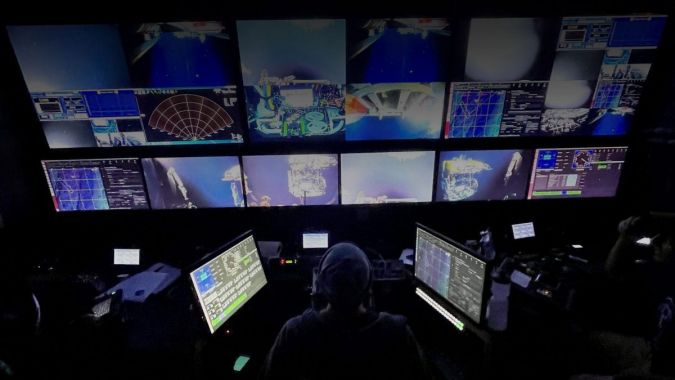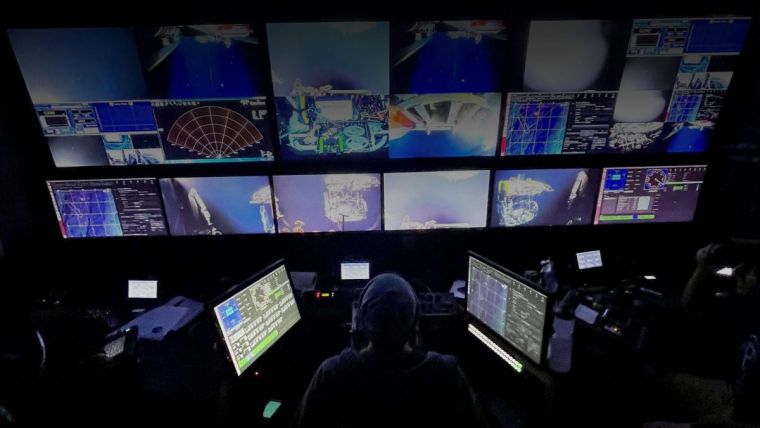ROV 'Jason' Helps Recover Two Other Underwater Vehicles
Ocean Exploration Trust’s ROVs Hercules and Argus were stranded on the seafloor recently, but were recovered thanks to cooperation from several ocean science and exploration institutions.
On Thursday 2 September, the remotely operated vehicle (ROV) Jason succeeded in helping recover two other underwater vehicles, ROVs Hercules and Argus, that were stranded on the seafloor off the coast of British Columbia last week when their tether to the surface broke. The operation came about as a result of close collaboration and mutual aid that are a hallmark of the ocean science and exploration community and the maritime community as a whole.
Hercules and Argus, which are owned and operated by the Ocean Exploration Trust (OET), were off the coast of Victoria Island, British Columbia, to service seafloor instruments operated by Ocean Networks Canada at a location known as the Endeavor Hydrothermal Field. The vehicles were in the water when the tether connecting them to their support ship, the exploration vessel (E/V) Nautilus, separated and the pair became stranded on the bottom in 2,200 metres (7,220 feet) of water.
“This incident occurred entirely underwater and at no time was an unsafe situation for the team onboard,” OET said in a statement online. “While this is a rare event, this is not the first of these types of situations in the field of ocean exploration and research.”
Deep-submergence Work
Soon after the news of the loss of the vehicles spread, offers of assistance from the oceanographic research and exploration community began to arrive. Among these was assistance from ROV Jason, which is owned and operated by the Woods Hole Oceanographic Institution (WHOI) in Woods Hole, Mass. As luck would have it, Jason was on board a U.S. research vessel, R/V Thomas G. Thompson, operated by the University of Washington, servicing seafloor instruments that are part of the National Science Foundation (NSF)-funded Ocean Observatories Initiative Regional Cabled Array less than 200 miles south of where Nautilus was operating when the incident occurred. Teams at WHOI, University of Washington School of Oceanography, Ocean Observatories Initiative, Schmidt Ocean Institute, Oregon State University, Ocean Networks Canada, the University-National Oceanographic Laboratory System and NSF immediately began exploring options to assist recovery efforts being organized by OET and, when it was decided Jason was the best option, how to make the vehicle available as quickly as possible.
“Jason is a workhorse of the deep-submergence work and was in its ‘heavy-lift’ configuration when we heard the news,” said Andy Bowen, director of the National Deep Submergence Facility at WHOI, which oversees operation and maintenance of the vehicle. “If something like this was going to happen, you couldn’t ask for better circumstances. We were ideally prepared to offer the highest level of assistance possible. We know that, if the situation was reversed, we could depend on our friends at OET to do the same.”
After a half-day transit to meet Nautilus, the Thomas G. Thompson deployed Jason and the vehicle descended to and carefully approached Hercules and Argus. After inspecting both vehicles, Jason expedition leader Ben Tradd and pilot Mario Fernandez cut the tether connecting them and Hercules rose to the surface under its own buoyancy. When Hercules had been safely recovered, Jason returned to the seafloor, attached a cable to Argus and the crew on Nautilus recovered it to the ship a little more than 24 hours after Jason arrived on site.
“At sea, you are reliant on the people and resources immediately at hand to see you through your mission safely and successfully,” said Bowen. “So, when something goes wrong, the community of mariners rallies to offer any and all assistance necessary. No questions asked.”















